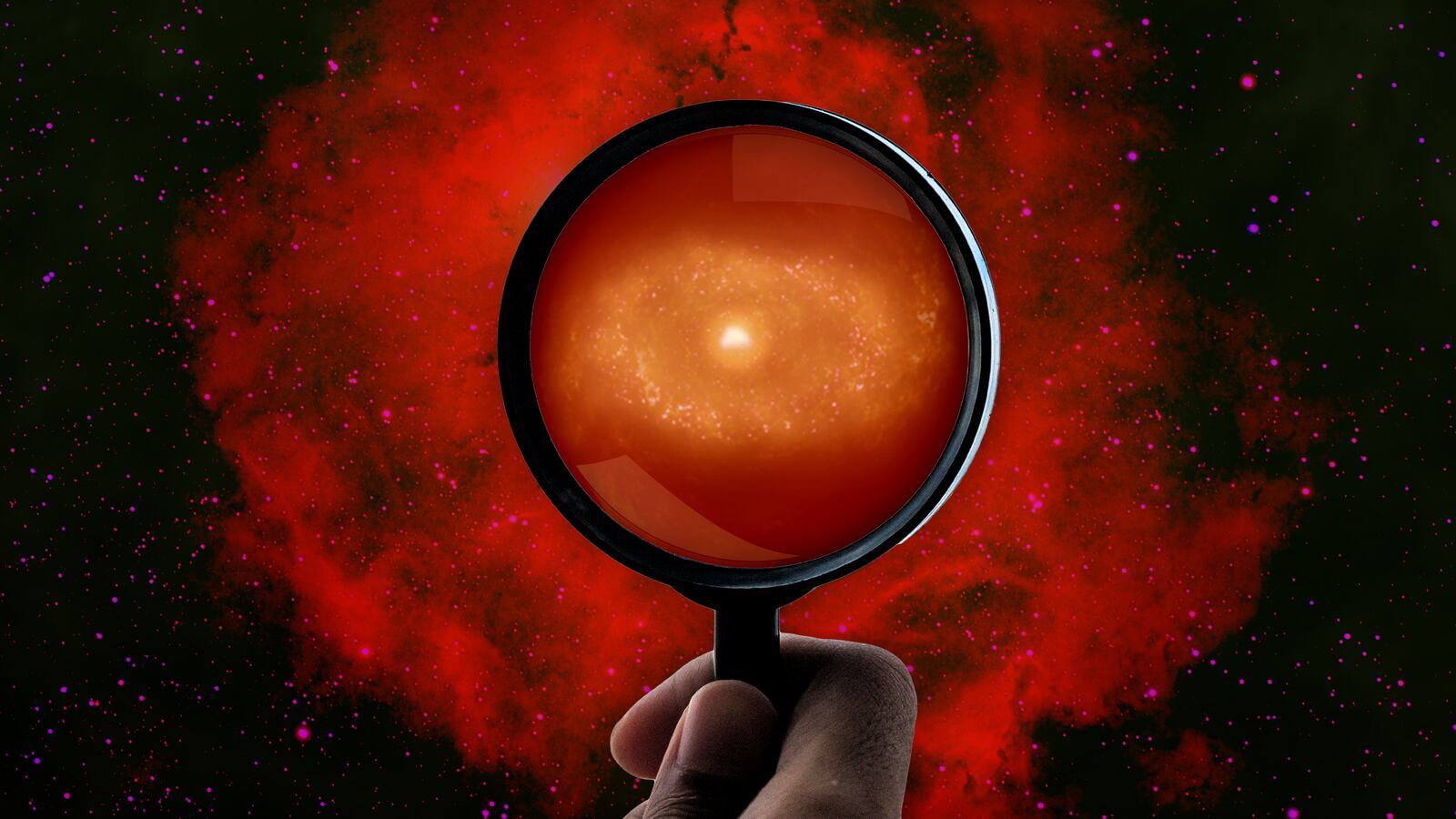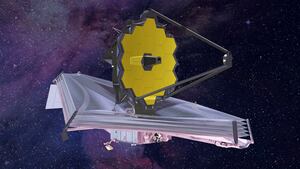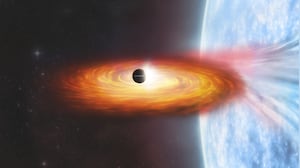After 25 years of development costing nearly $10 billion, NASA’s James Webb Space Telescope finally launched on Christmas Day. Assuming there are no hiccups and the six-ton telescope is able to fully deploy its instruments in the next 5.5 months, eligible scientists will begin taking turns pointing its 47-by-70-foot arrays at whatever interests them.
Yoichi Tamura, a professor in the Division of Particle and Astrophysical Science at Nagoya University in Japan, already knows what he’s going to do with JWST once his turn comes around. “I would search for the reddest galaxies to identify the furthest galaxies,” Tamura told The Daily Beast.
Tamura and his Japanese, Dutch and American teammates—who have a reservation for observation time with JWST at some point in the future—plan to point the telescope at a pair of suspected “redshift-13” galaxies. The team described the potential galaxies, and a strategy for surveying them, in a new paper that appeared online last month (though it hasn't been peer-reviewed yet).
In astronomy, a “redshift” is the change in a distant galaxy’s infrared signature that helps us to determine its age. As the object moves away from the observer, its light increases in wavelength and thus decreases in frequency and photon energy, causing that light to turn redder and redder.
Redshift-13 galaxies are at the outer edges of the known universe, meaning they were among the first hurtle outward as the universe began expanding following the Big Bang 13.8 billion years ago. No younger than 13 billion years old, these galaxies are the universe’s senior citizens—and guardians of potentially profound secrets about the origins of, well, everything. Thousands of them could be visible from Earth, with the right technology.
Since astronomy is all about merely glimpsing the light coming from an object, we're literally looking at that object as it was in the past. A distance of 10 light-years means it took 10 years for that light to go from point A to point B. So the image we register when we peer at a high-redshift galaxy is the object’s baby picture. A good long look at a redshift-13 galaxy is a window into a time, billions of years ago, when the universe was young.
Very young galaxies contain very young stars, potentially showing us how those stars form, Michał Michałowski, an astronomer at Adam Mickiewicz University in Poland, told The Daily Beast. “This is an important topic because these first stars set up the scene for further evolution of galaxies by producing the first batch of heavy elements.”
The reddest and thus oldest galaxy that astronomers have confirmed so far, GN-z11, has a redshift of 11, making it around 13.4 billion years old. “We do hope to go further,” Tamura told The Daily Beast. (GN-z11 roused controversy lately, after one team of astronomers observed what they believed to be a gamma-ray burst from the faraway galaxy and other teams tried to poke holes in that conclusion.)
Even with JWST at their disposal, Tamura and his teammates face daunting obstacles. The hunt for redshift-13 galaxies is a difficult one. “Galaxies in early times are predicted to be faint and rare according to the standard model of the universe,” Tamura explained.
Plus, other galaxies, stars, or even nearby derelict rockets—“interlopers,” astronomers call them—tend to get in the way of a direct observation. That might be what happened with the purported gamma-ray burst from GN-z11.
But the biggest obstacle to observing these objects is hydrogen. Neutral hydrogen atoms can absorb a lot of the light emitted by a galaxy . They can alter the galaxy’s color and muddy its true redshift, thus complicating an accurate assessment of its age and distance from Earth. A lot of hydrogen can accumulate in the vast distances of space and mess up observations of faraway objects. The hydrogen problem gets a lot worse when you look at a distant galaxy from inside Earth’s hydrogen-rich atmosphere.
There’s a solution—but an incomplete one. Using a sophisticated analytical method called the “Lyman-break technique,” astronomers can work backward from this hydrogen-altered color spectrum. “We are able to make a coarse estimation of its distance,” Aaron Yung, a teammate of Tamura’s at NASA’s Goddard Space Flight Center in Maryland, told The Daily Beast.
The Lyman-break method alone can’t pinpoint a galaxy’s redshift. “Distances estimated with this technique come with rather large uncertainties, and are prone to contamination from foreground objects,” Yung explained. Once astronomers have identified possible redshift-13 galaxies by applying the Lyman-break technique to existing surveys, they need to point even better—and preferably space-based—telescopes at the same targets, ideally for several days at a time.
That’s where the JWST comes in. It’s the first of several new space telescopes in deployment or development that, owing to their bigger and more sensitive arrays, stand any chance of confirming that those dim, reddish objects are ancient galaxies. Besides the JWST, these new telescopes include NASA’s Nancy Grace Roman Space Telescope, which could launch in the mid-2020s; as well as the Japanese GREX-PLUS, which is still a decade or more away.
Together, these three new telescopes could help astronomers confirm and survey not only redshift-13 galaxies–but even older ones, as well. Tamara and his colleagues think it might even be possible to detect one of the very first galaxies ever to form, which astronomers guess would have a redshift of around 17.
The possibilities are almost too weird to conceive. A redshift-17 galaxy “should be very different from what we see in the nearby universe,” Tamura said. “It would contain clusters of very young stars, even including the first generation of stars.”
Those newborn stars could be huge—10 times more massive than the sun—and extremely hot and bright. They might also be short-lived and prone to exploding. In an image of a redshift-17 galaxy, “blast-waves from supernovae would be running across the entire galaxy, making the galaxy very violent,” Tamura explained.
Michałowski said he’s skeptical such objects even exist. “Redshift 17 is only 230 million years after the Big Bang,” he said. “This is such a short time that a question remains if there was any galaxy that early at all.”
There’s only one way to be sure. Scrutinize potentially redshift-13 galaxies then continue peering farther and farther out to the edge of the universe, looking for ever-older—and redder—galaxies. It all starts with safely deploying the James Webb Space Telescope.
Good news on that front. Earlier this week, the gargantuan telescope successfully unfurled its tennis-court-size sun shield. On Saturday, it will finish unfolding the second of its two primary wing mirrors, which means it will have finally completed deploying its biggest parts and be ready to start testing out its instruments. The wait has been immense, but it'll be worth it if we're able to uncover some of the universe's biggest secrets.








